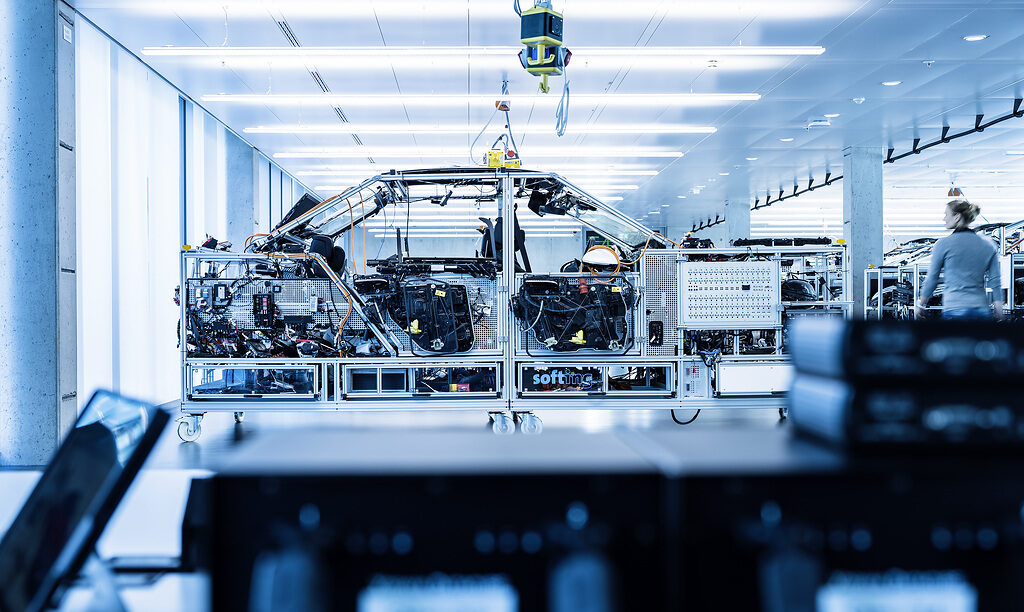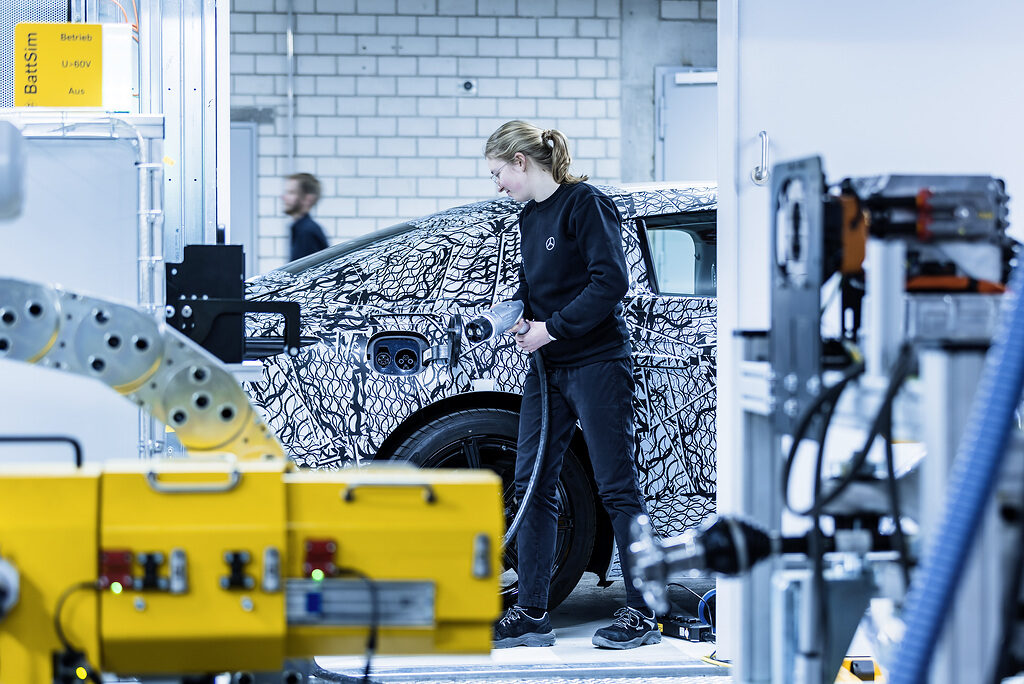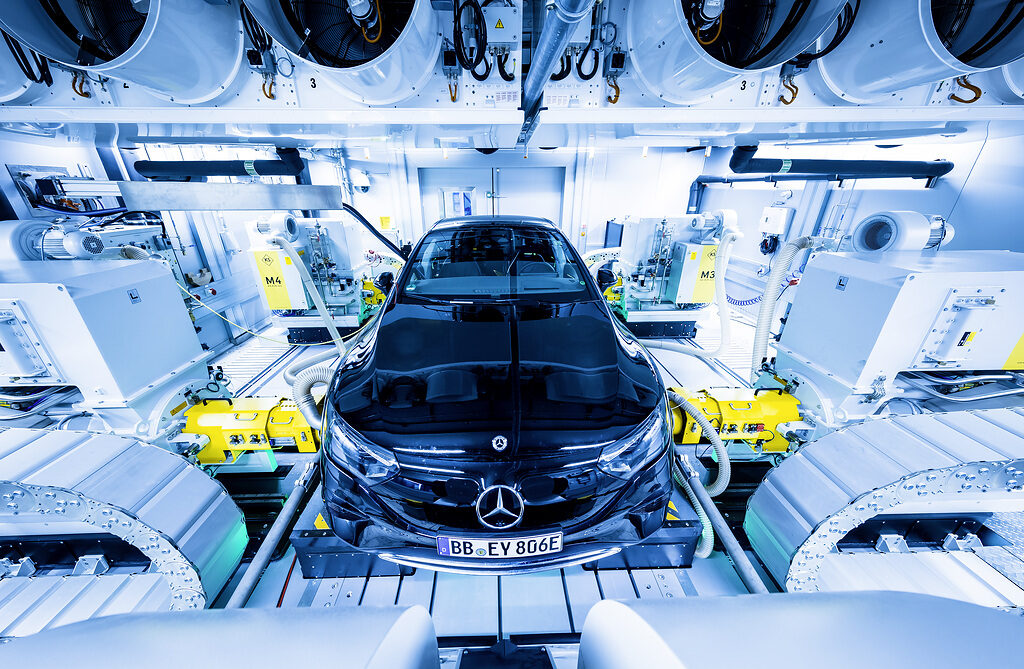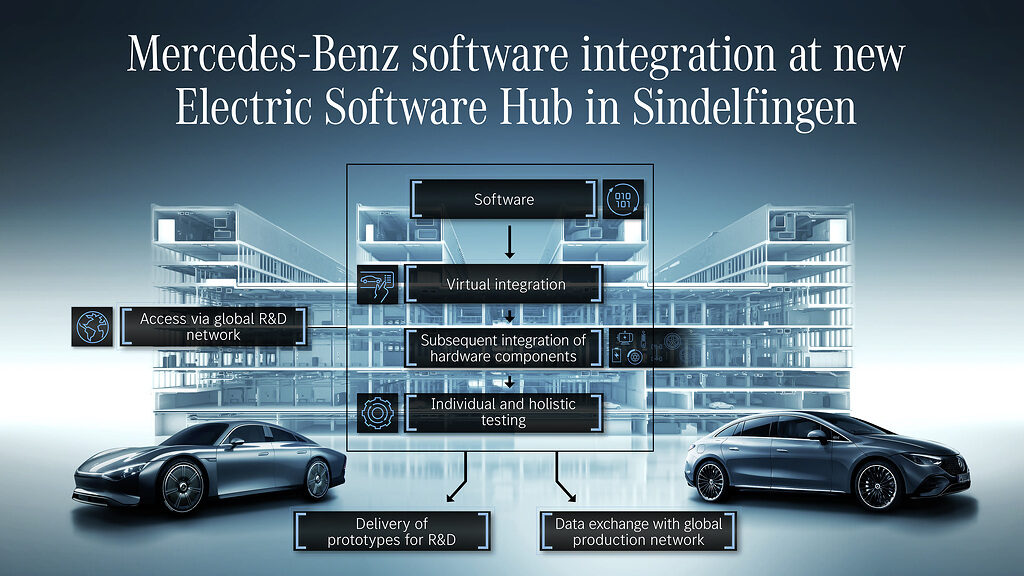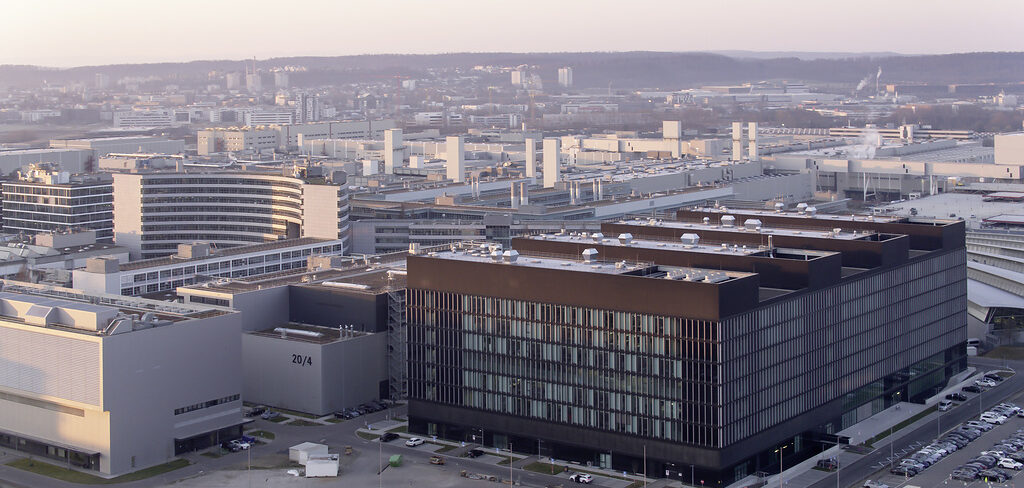Mercedes-Benz hopes to accelerate the development of its electric vehicle range with the opening of its Electric Software Hub at the Mercedes Technology Centre (MTC) in Sindelfingen, Germany. Numerous software, hardware, system integration and testing functions have been brought together under one roof in an eight-floor, 70,000m2.
From 2025, all the company’s new vehicle architectures will be exclusively electric, and Mercedes-Benz wants to take a holistic approach to vehicle software, ranging from basic research and development to the coding of software.
“The Electric Software Hub is the epicenter of our research and development and at the same time closely networked with the worldwide production sites. This is where key aspects of the future of Mercedes-Benz become reality – especially our own MB.OS operating system. Cars are among the most complex products in general. The hardware and software are decoupled and must work together perfectly. We ensure this in the Electric Software Hub. It is our software integration factory,” said Markus Schäfer, a member of the board of management of Mercedes-Benz Group, and CTO responsible for development and procurement.
With increasing digitalization, the control units in vehicles are taking on ever more complex tasks, from infotainment and driving assistance systems to handling the electric drivetrain. Furthermore, vehicle development is no longer finished once the car leaves the factory: cars in customer hands also receive continuous software updates with new and improved functions.
Mercedes hopes the Electric Software Hub will bring a decisive advantage in this new vehicle world, with approximately 1,100 experts from 19 cross-functional departments now working together in closer physical proximity than ever before. Together with the expansion of digital testing procedures, it is hoped that this will increase both the pace and the quality of the software integration processes.
Mercedes explains that the upper floors of the facility house the software code creation and pre-integration labs. Here, virtual technologies and simulation are used to test whether the various software components interact correctly with each other and whether the vehicle functions are implemented correctly. For example, components and control units are tested fully via hardware-in-the-loop using highly specialized test benches designed specifically for various model series under development.
Driveable prototypes are located on level four, along with what Mercedes calls retreat areas grouped around meeting rooms. These enable the development teams to evaluate together immediately once data is obtained during tests. Since the entire building is networked via fiber-optic technology, data generated during tests can be read in a very short time.
The three lower levels house specially designed laboratories, workshops and test benches. The vehicle test benches allow tests at temperatures from -30 to +50°C and speeds of up to 250km/h. In addition, the facility has 250 charging points, which speed up testing, increase the pace of development and enable replication of a range of global testing standards.
